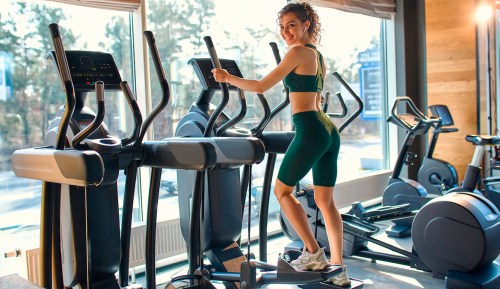Why you should watch out for the ‘butt wink’ when squatting
There are various improper squat form variations, but the butt wink is one that can lead to lower back pain in the future. Here's what to know and how to prevent it.

One thing that’s never crossed my mind? Butt winks. Never heard of it. That is, until fitness trainer Samantha Ciaccia told me that it’s really good to prevent a “butt wink” when doing squats.
Before your mind wanders too far, a butt wink isn’t, like, something dirty or embarrassing. It just has to do with what happens when your lower spine is arched at the bottom of a squat. Here are the biomechanics of it. “As you’re lowering, as is most commonly seen in a squat, once you get past parallel—which means your hips are at the levels of your knees—your pelvis and lumbar spine, the lower part of your spine, goes into flexion,” Ciaccia explains. “Usually that flexion happens with lack of engagement.”
In other words, when your lower spine arches at the bottom of a squat as you stick your butt out, it signifies that you’re not fully engaging your core, glutes, and hamstrings—and there’s more of a chance you’ll wind up with back pain down the road. At the same time, it’s not necessarily a bad thing to have a “butt wink.”
“If you’re in a bodyweight squat and going up and down, the butt wink is just anatomically how your body moves at that degree, at that angle,” says Ciaccia. Preventing it, though, simply gives your spine more protection. “When you’re doing a heavy load or a PR squat, that’s when it’s key to be more aware of what muscles need to be turned on,” she says. “You want to protect the spine when using heavy loads.”
So to nix the butt wink, Ciaccia says to keep the spine neutral—even as you squat down. “You want to take away that flexion and have a neutral spine, which means your core is on, your pelvic floor and glutes are on,” she says. It involves more pelvic floor awareness, which you don’t have if you’re butt-winking. Before squatting down, she says to turn on your core, glutes, and hamstrings—and only continue through the movement if you still feel those same muscles engaged. “If not, stop and readjust stance, add more drills, and try again,” says Ciaccia.
Once you nail the no-butt wink squat, you’ll have pelvic control, a neutral spine throughout the entire squat, and a lot more burning in your glutes and hammies, she notes. Now squat it out.
For form tips on other fitness moves, here’s how to do a plank like a pro. And here’s how to do a push-up in proper form.










